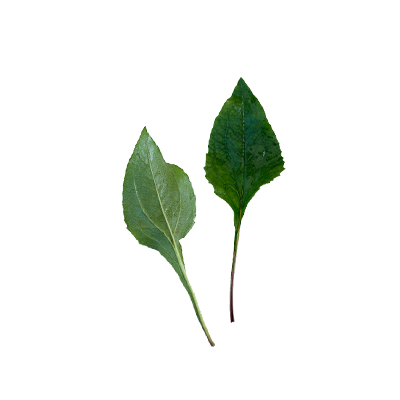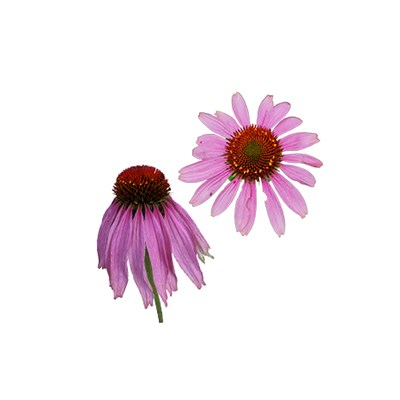Purple Coneflower
Echinacea purpurea (L.) Moench
Asteraceae
Location in our garden
Principal
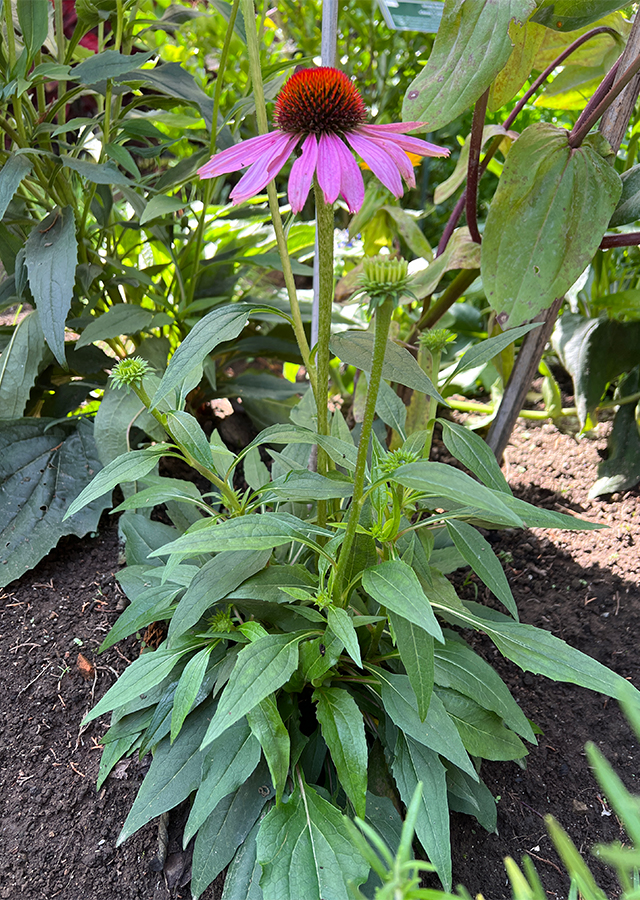
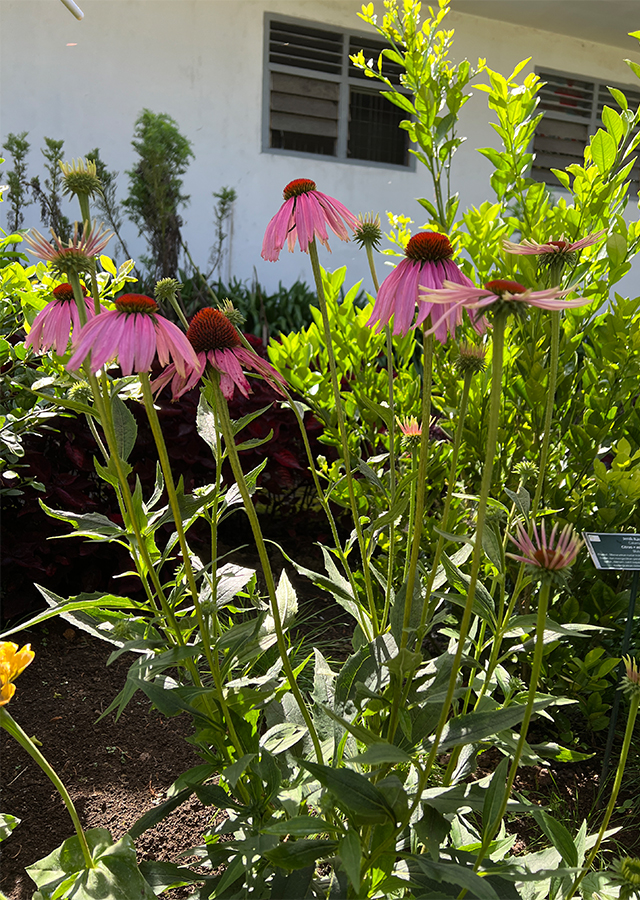
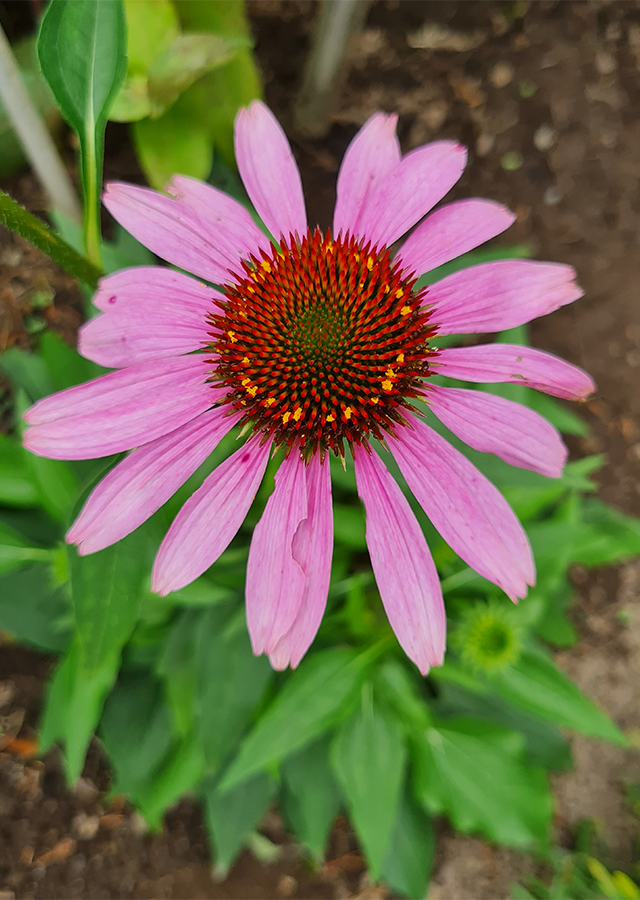
Synonym
Brauneria purpurea (L.) Britton
Echinacea intermedia Lindl. ex Paxton
Helichroa crocea Raf.
Habitus
Herbaceous. Annual herb, grows 5-120 cm high
Part Used
Leaves
Flowers
Roots
Stem
The Whole Plant
Growing Requirements
Full Sunshine
Habitat
Forest
Roadside
Grassland
Overview
Native to eastern North America, Echinacea purpurea is widely grown as an ornamental plant in gardens and parks and is also cultivated commercially as a medicinal plant for centuries. The petal is edible. This plant have a role in treating various diseases and maintaining body's health. Echinacea purpurea is generally made as tablets, alcoholic drugs, and extracts, also often used as tea. Echinacea purpurea has many traditional and modern medicinal uses, many parts of the plant are used for a variety of effects.
Vernacular Names
Purpur- Sonnenhut (German), Rudbeckia (Dutch).
Agroecology
E. purpurea usually found in fields and open forests. It grows well in the tropical environment of Indonesia at an altitude of 450 – 1,100 m above sea level. Thrives best in full sun and does not tolerate shade. Prefers loamy or sandy, well-drained soil with pH between 5.5 – 7.5.
Morphology
- Roots - fibrous root.
- Stems - erect, branched, brownish green, hairy.
- Leaves - single, alternate, simple, ovate, lower leaves are wider. Lamina ovate lanceolate becomes narrow lanceolate, jagged edges, leaf tips are acute, leaf bases are rounded to acute, leaf bones are curved. Involucral bracts are linear to lanceolate.
- Flowers - Discs are conical to subglobose, disc florets have a greenish to pinkish or purple crown. Ray florets are corolla pink-purple and pink-purple, two-toothed at the apex, sparsely hairy on the underside. Cypselae, 3–4 angled, glabrous, brown or bicoloured with dark brown distal band.
Cultivation
Propagated by seeds, divisions and root cuttings.
Chemical Constituents
Polysaccharides, caffeic acid derivatives (caffeic acid, cichoric acid, caftaric acid, chlorogenic acid), phenolic acids, rosmarinic acid, alkamides, isobutylamide, flavonoids, and glycoproteins.
Traditional Medicinal Uses
- Boosts the immune system.
- Reduces mouth pain, sore throat, urinary tract infections.
- Helps reduce muscle pain.
- Inhibits the growth of cancer cells.
- Relieves anxiety.
- Lowers blood pressure, symptoms of the common cold in adults.
- Medicine for colds, infections, wounds, ulcers, and inflammation of the skin.
- Helps healing inflammation.
- Acts as anti-inflammatory, antiviral, anti-venom and antioxidant.
Part Used
Reference Sources
- Royal Botanic Gardens, Kew. Plants of the World Online: Echinacea purpurea (L.) Moench. https://powo.science.kew.org/taxon/urn:lsid:ipni.org:names:1174497-2. 04-07-22.
- Lim T.K. 2013. Echinacea purpurea. Edible Medicinal and Non-Medicinal Plants, 3 : 340–371. In National Library of Medicine. https://www.ncbi.nlm.nih.gov/pmc/articles/PMC7121736/. 04-07-22.
- Cab International. Echinacea purpurea. https://www.cabi.org/isc/datasheet/48033#:~:text=Echinacea%20purpurea%20(purple%20coneflower). 04-07-22.



